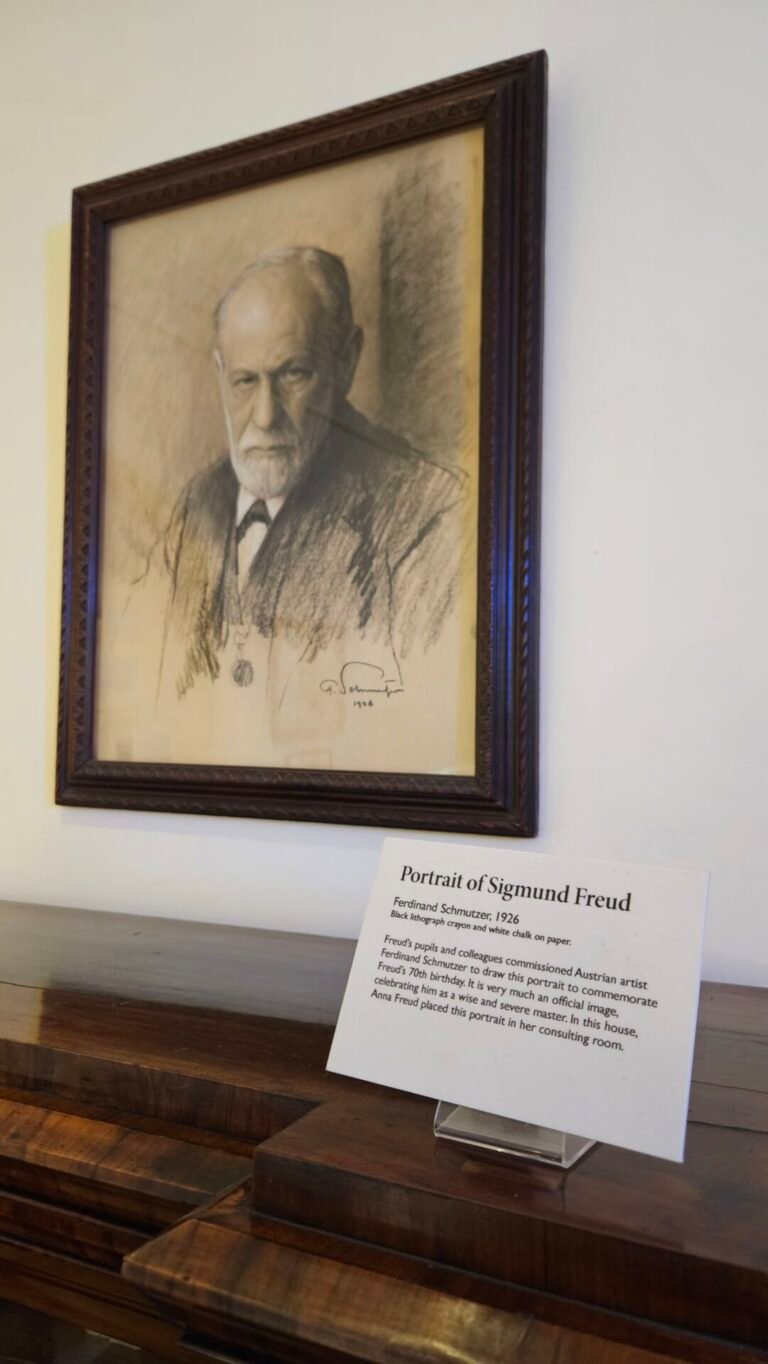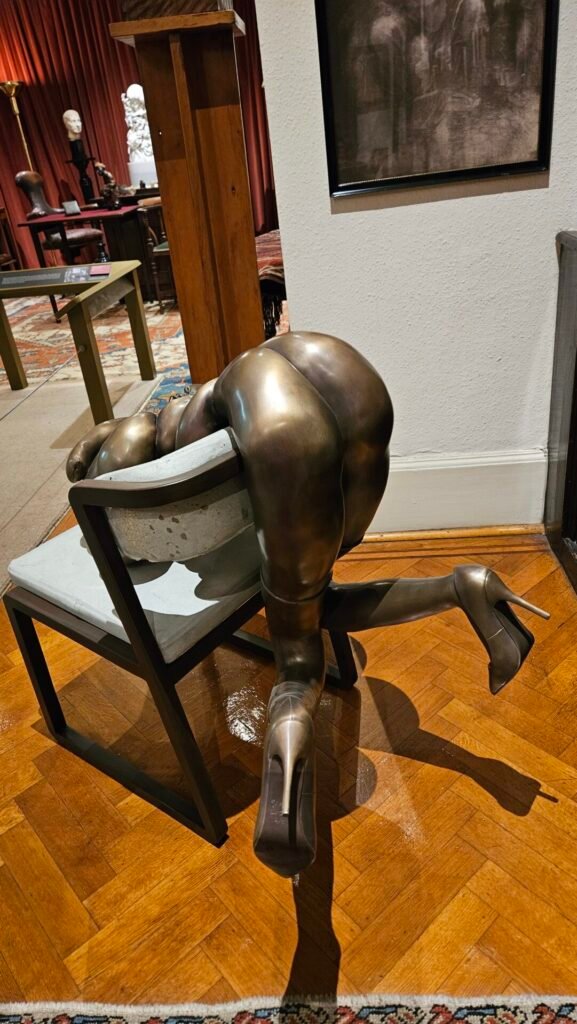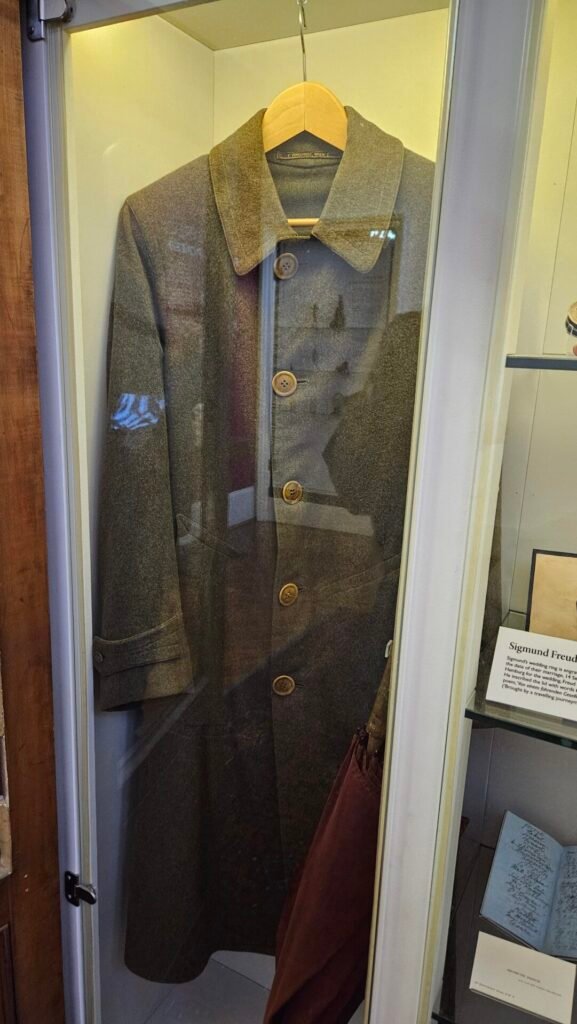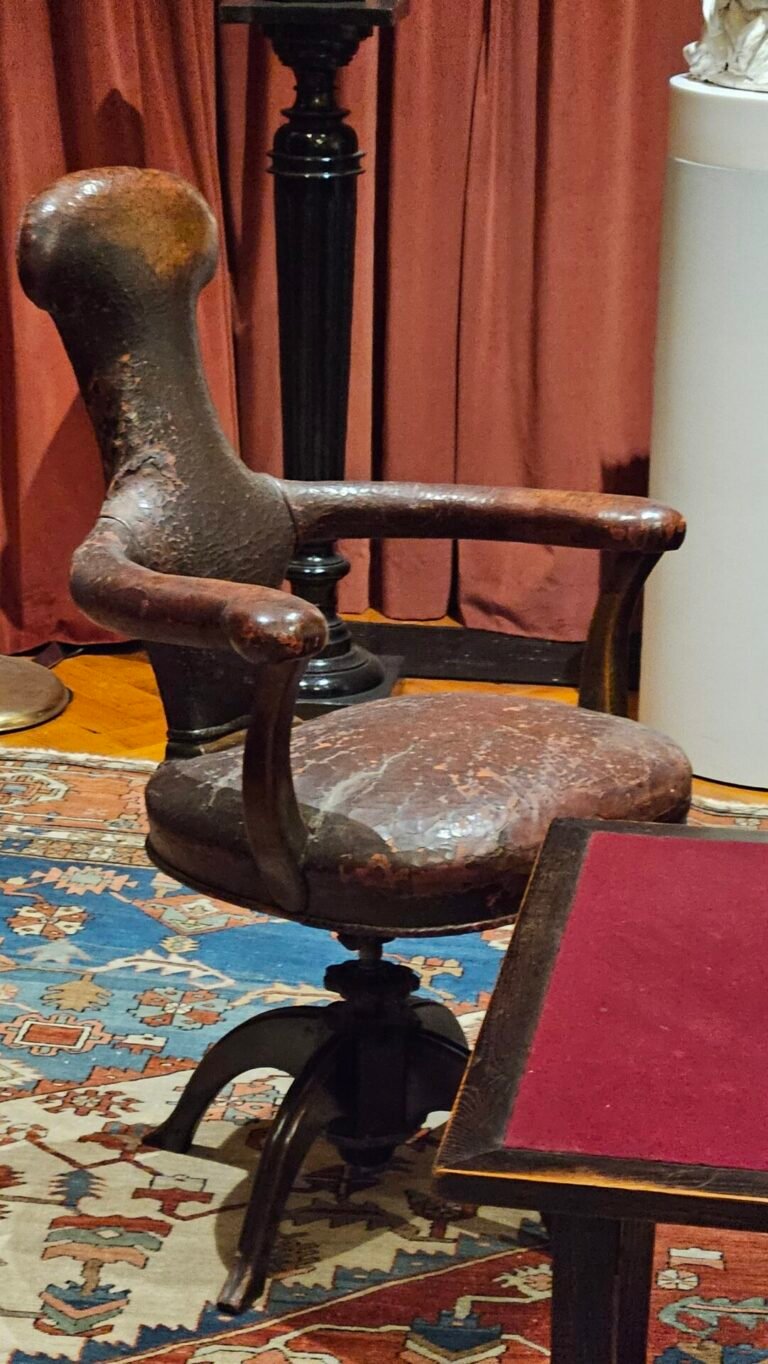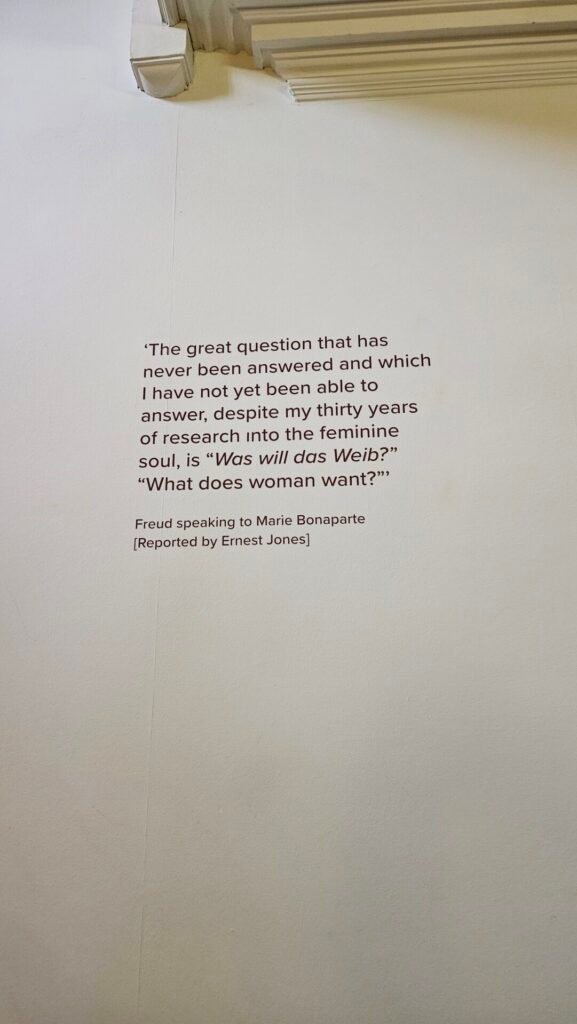Living only three short stops on the Met Line from Freud’s final house, I thought it was about time I dropped in and had a look around, having wanted to for ages.
Tucked away in the quiet, tree-lined streets of Hampstead (NW London), the Freud Museum, located at 20 Maresfield Gardens (5 mins walk from Finchley Road tube station), this historic home became Freud’s final residence after he and his family fled Nazi-occupied Austria in 1938. Sigmund Freud, the father of psychoanalysis, lived here until he died in 1939, and his daughter, Anna Freud (a huge figure in child psychoanalysis herself) continued to live in the house until 1982. The home opened to the public in 1986, carefully preserved to reflect its original condition, complete with Freud’s personal items and collections.
The highlight of the museum for me was Freud’s study. The room remains exactly as he left it, with the famous psychoanalytic couch (shipped over from Vienna) where he worked with patients. The couch was a gift from a patient; it became a symbol of the ‘talking cure’ therapy which he pioneered (and which led to psychotherapy as we know it), encouraging his patients to speak freely, thus exploring the subconscious mind in a way that no one had seriously done before.
While some of his teachings might have lost support over the years, there is still so much besides that anyone with anything to do with psychology (especially therapists) owes to Sigmund Freud, I feel. The Humanists did scorn some of his stuff in the 60’s (e.g. his psychosexual development theories), some of which to me seemed overreactions – for instance, the humanists’ move to see the whole person as being good saw Freud’s view of the Id and its aggressive aspect frowned upon.
Parts Therapy emanated from Freud’s work, and the latest derivative of it, Internal Family Systems (IFS) has its founder, Richard Schwartz, stating “there are no bad parts”. At the same time, psychopaths and mass murderers engage in the most horrific public acts, it makes you wonder if Freud wasn’t right all along. Freud aimed to bring subconscious material into conscious awareness for healing through his psychoanalysis, which developed into the current psychodynamic therapy system.
His vision and bravery in proposing ideas and concepts that even angered his distinguished peers are excellent. His contributions to psychology and psychotherapy/analysis are massive, most of which remain relevant or have evolved to this day, such as the client/therapist interaction and dynamics and seeking causes to behavioural problems now, through locating causal emotional disturbances from one’s past, for understanding and healing.
For most adults, it’s a must-see in my opinion. The socio-political backdrop to why he was there is also fascinating, a metaphor, surely, of the aggression of the extreme Id on a national scale, as seen with the Nazis and the frenzied mass insanity of WW2. The rear garden is calm and peaceful; the great man loved sitting there in his final year.
“One day, in retrospect, the years of struggle will strike you as the most beautiful.” Sigmund Freud.
Nov 22nd 2024.
